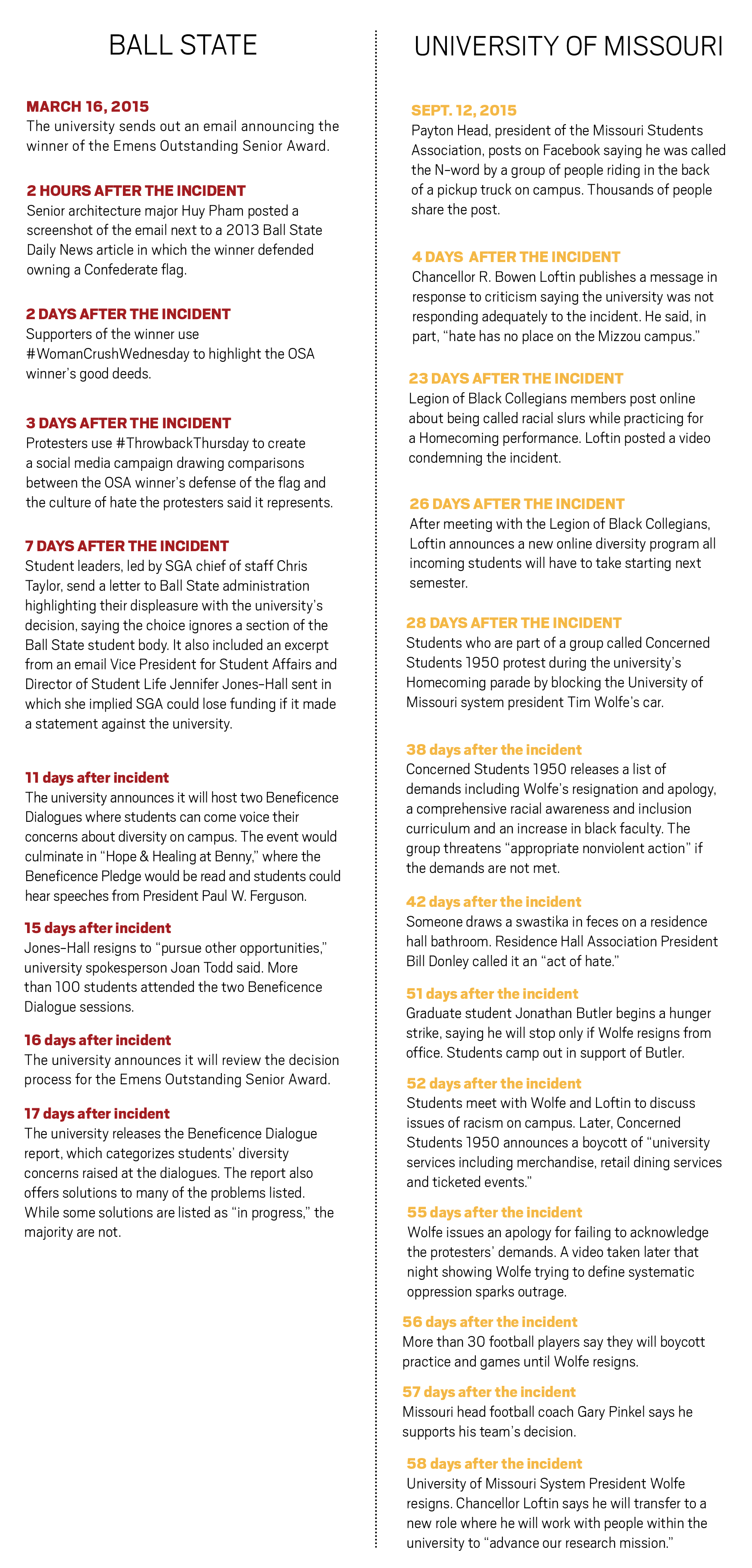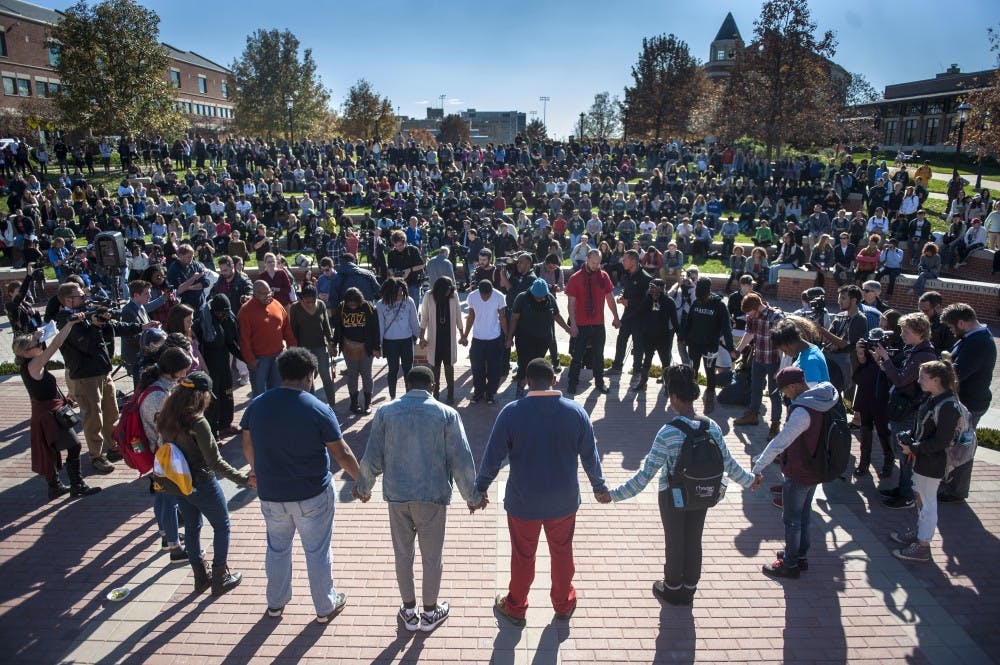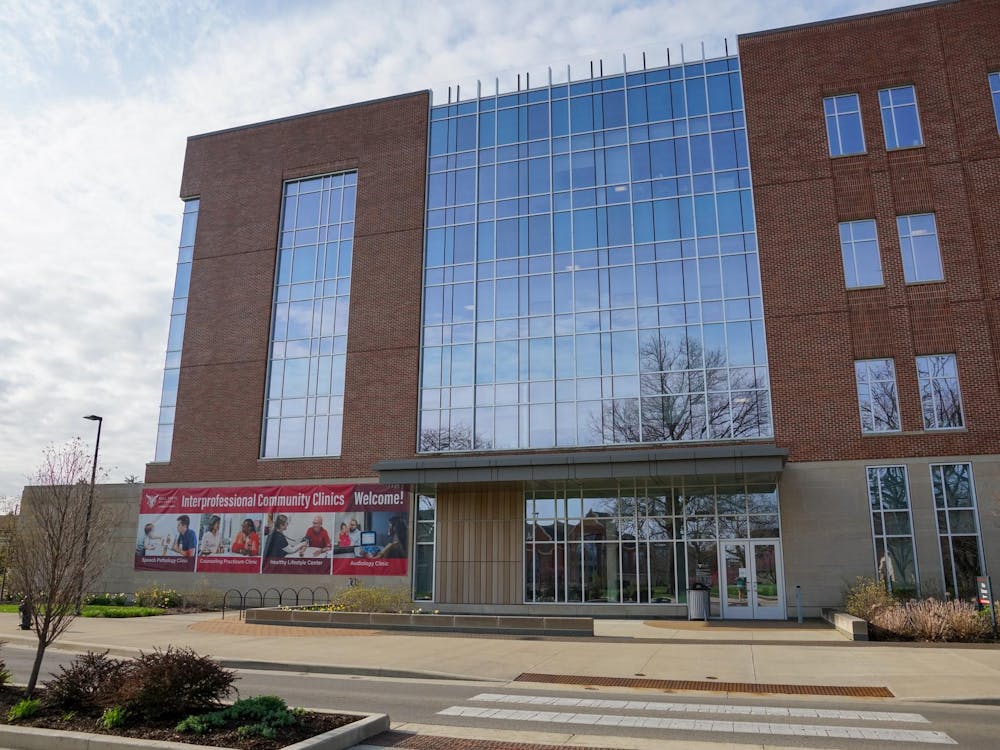A week ago, the president of the University of Missouri stepped down after weeks of protests sparked debate about the administration’s handling of racially-charged incidents.
Protests and discussions have spread to campuses across the nation, some showing solidarity with Mizzou students and others pointing out undercurrents of racism and maltreatment on their own campuses.
It is also seven months after Ball State grappled with its own issues of race after a former SGA President, who had publicly defended their ownership of a Confederate Battle Flag, was awarded the Emens Outstanding Senior Award.
Less than two hours after the university announced the winner, senior architecture major Huy Pham posted a screenshot of the email announcement next to a 2013 Ball State Daily News article in which the winner defended owning the flag to Facebook. The flag had since been thrown out, but the university’s selection created a social media outcry that paralleled a years-long national debate about race and prejudice.
In the week that followed various university, groups waged social media campaigns aimed at showing the history of prejudice and oppression they said the confederate battle flag represented. A group of student leaders led by SGA chief of staff Chris Taylor sent an email to President Paul W. Ferguson challenging a culture of white privilege and the university’s failure to, “consider certain populations.”
Within two weeks of the award winner announcement, more than 100 people attended two Beneficence Dialogue sessions aimed at allowing students to voice their concerns on diversity. The talks culminated in Hope and Healing at Benny.
President Ferguson pledged the dialogues weren’t an end but just a beginning.
WORK LEFT TO BE DONE
So, a little over half a year later has that conversation continued?
“The answer is yes and no,” said David Jones, Ball State’s Black Student Association president. “Simply in the sense that nothing else has hit the fan, yeah. But there is much work to do.”
Jones has participated in several roundtable discussions with administrators and student leaders to continue the conversation, but Jones said he doesn’t know how much these conversations actually translate into action focussed on diversity.
“The problem is that once it’s over the attention dies down and we stop seeking answers. I don’t feel as if we are still united because we only come together as a campus when there is something divisive.”
The controversy surrounding the Outstanding Senior Award isn’t the first time race has been a campus-wide discussion.
In 2014, a drawing of a person hanging in a noose with the word “black” pointing to the image was found on a digital board in the Letterman Building. And in 2013, the Student Government President resigned after making racially insensitive tweets about his boss who was Asian.
The problem, as Jones sees it, is that campus is too subdivided, with people reluctant to attend events or meetings for groups outside their own.
“I believe the [Beneficence Dialogues] last year had an impact,” he said. “It is great that people will come together when there is a situation, but the only way to make a real change is to stay.”
The university released a Beneficence Dialogue report Oct. 16 on the six month anniversary of the controversy that summarized the concerns and possible solutions to promote diversity and inclusion. Many of the concerns raised by students in the report echoed Jones’ sentiment, saying many people think the multicultural center is only for people of color and that faculty don’t care about student’s concerns unless there is a galvanizing controversy or action.
The report looks to address these concerns by overhauling marketing strategies to attract diverse students, explore why underrepresented minority students are not admitted or retained in some academic programs and increase scholarship opportunities and resources for underrepresented minorities.
While some of the solutions in the report are marked as “in progress,” the majority aren’t.
The university also created a Council for Diversity and Inclusion, which Todd said meets regularly.
She also pointed to the university’s affirmative action and anti-harassment policy as promoting diversity on campus.
The affirmative action policy states that the university prohibits any discrimination based on, “race, religion, color, sex (including pregnancy), sexual orientation, gender identity or gender expression, disability, genetic information, ethnicity, national origin or ancestry, age, or protected veteran status.” However, it does not include requirements for minority hiring or recruiting nor does it outline punishments for discrimination.
Todd also pointed out that President Ferguson was among one of the first university presidents, along with the president’s of Indiana University and Purdue University, to come out against the Religious Freedom and Reformation Act that was passed by Governor Mike Pence.
Jones thinks there is still more the university could do.
“It seems as though everything is still coming together,” Jones said. “There just hasn’t been much change that has personally impacted me.”
For his part, Jones is working within BSA to make his organization open to everyone and to work with the other Big 4, the Latino Student Union, Asian-American Student Association and SPECTRUM, to bring their organizations together.
They plan to “switch boards” at least once this year meaning the board members will host the meetings for a different organization in order to get a better understanding of what the organization is all about.
He also plans to use Black History Month to promote the fact that it’s not just about “black,’ but instead about making a conversation.
But, he said, it will take more than just student groups to really make an impact, the administration needs to start hosting events or working with groups to promote diversity as well.
TAKING ACTION
Founder and president of the Ethnic Theatre Alliance Nathaniel Thomas said he is disappointed in Ball State’s administration for not taking more action to make a change.
“Why did it take six months to make that report?” Thomas asked. “That is the problem. [The Beneficence Dialogue Report] should have come out over the summer. I’m leaving [after this semester] and I haven’t seen any change.”
But he doesn’t only blame administrators for what he sees as a delay in action.
“I blame myself and my colleagues for being okay with where we are at,” Thomas said. “I believe if we would’ve stayed on it, if we wouldn’t have let it stop, then everything would have happened a lot sooner.”
The biggest change he expected to see after the Beneficence Dialogues was a focus on departments to be held accountable for meeting diversity requirements.
Thomas would like to see the university require departments to be made up of a certain percentage of minority students. Then, in order to ensure departments meet the quota, provide grants or funding based on racial diversity.
Ethnic minorities comprise about 13 percent of university students at Ball State, according to the fact book. That number has steadily increased over the past 5 years from 11.3 in 2010.
Numbers for ethnic minorities in each college and department were not immediately available.
Thomas believes it’s up to the student body to make sure the administration follows through on promises Ferguson made seven months ago.
“Look around, because what you see is apparently diversity because [Ball State] claim[s] to be a diverse school,” he said. “If you don’t like that, write a letter, plan a peaceful protest, make phone calls to their offices, meet with them weekly, whatever. At the end of the day we need to understand that we are paying to be here and they need to give us what we want.
“Use your rights. Go out there and cause a ruckus: a peaceful, constructive, directly focused ruckus.”
For both Jones and Thomas, the only real metric to gauge whether there has been real change within the university’s administration is to see the response when something else happens.
“There is going to be another me and there is going to be another [senior award] situation,” Thomas said. “It is just going to happen again, and the question is how do we handle it that time?”






